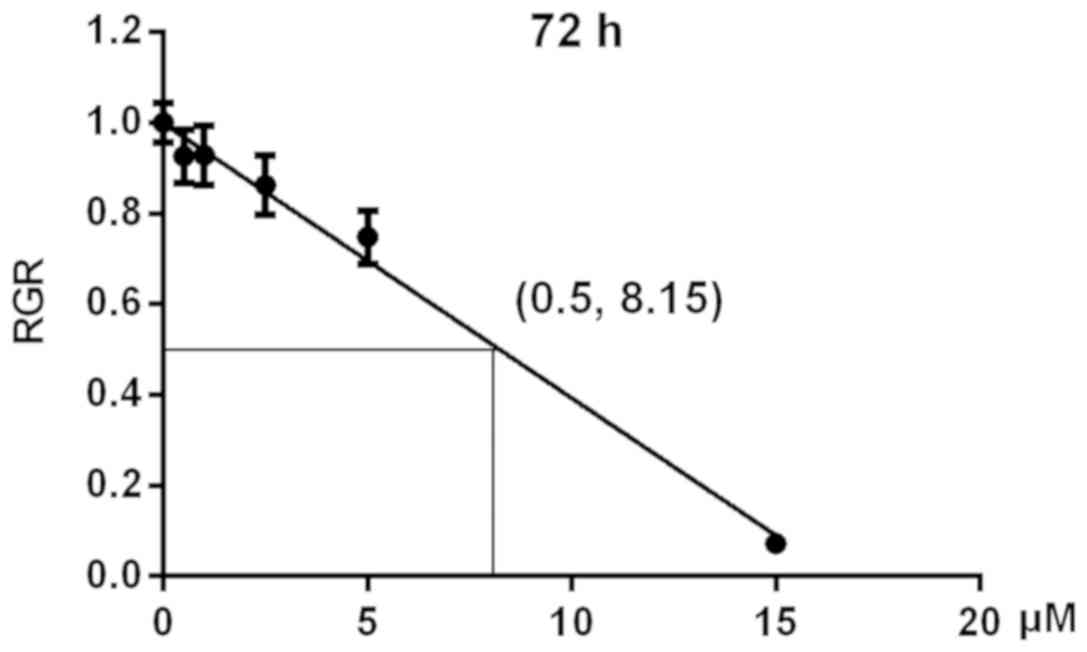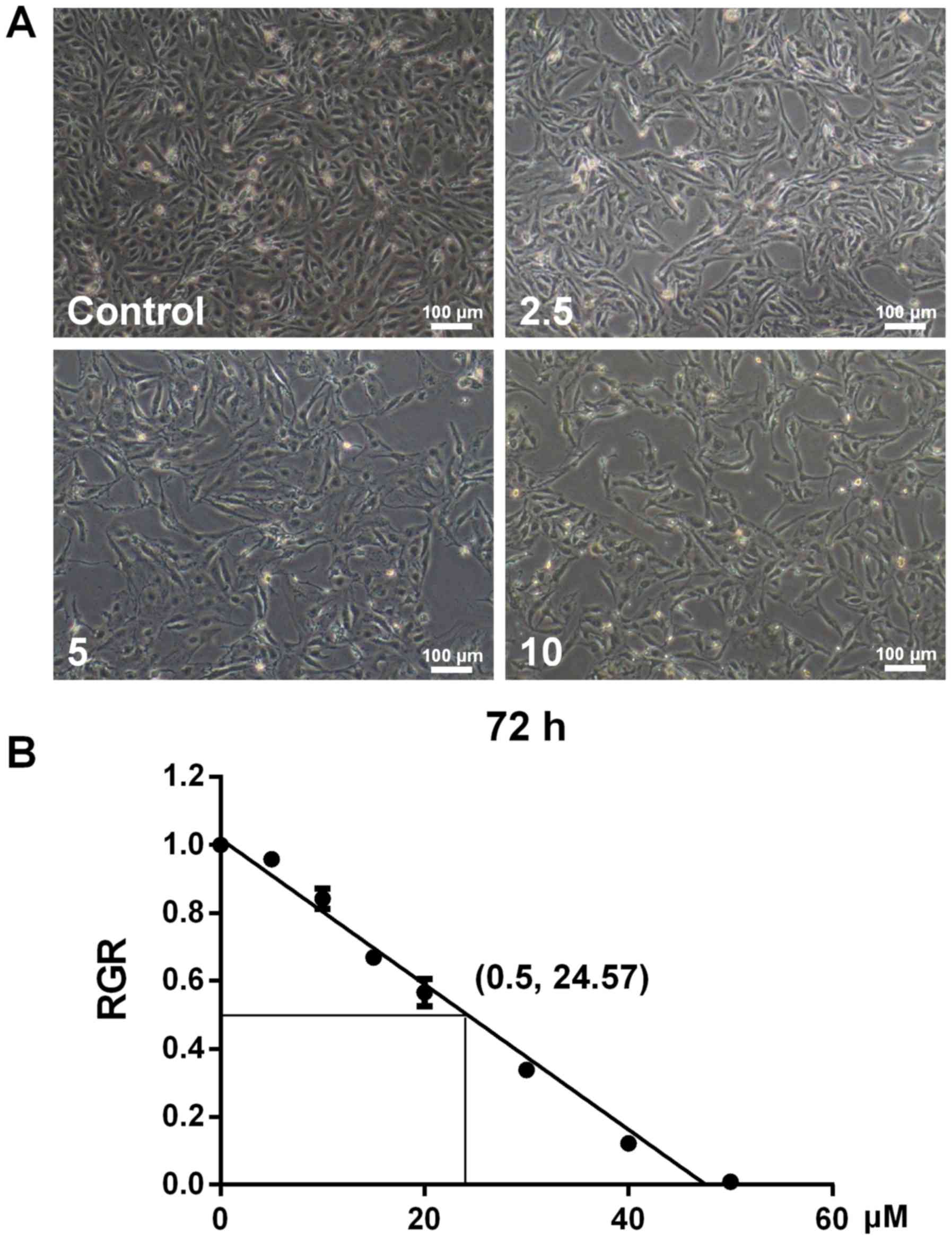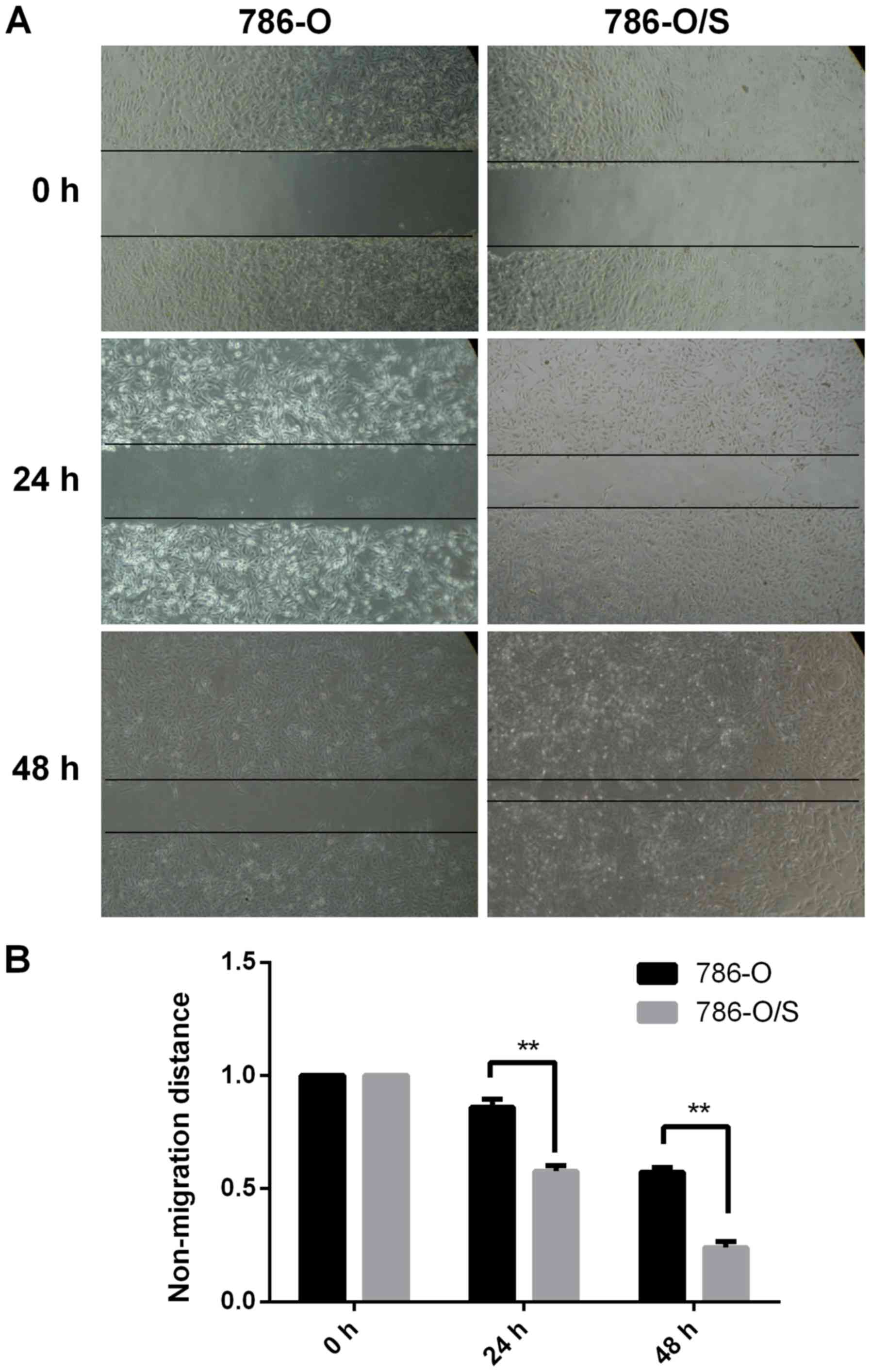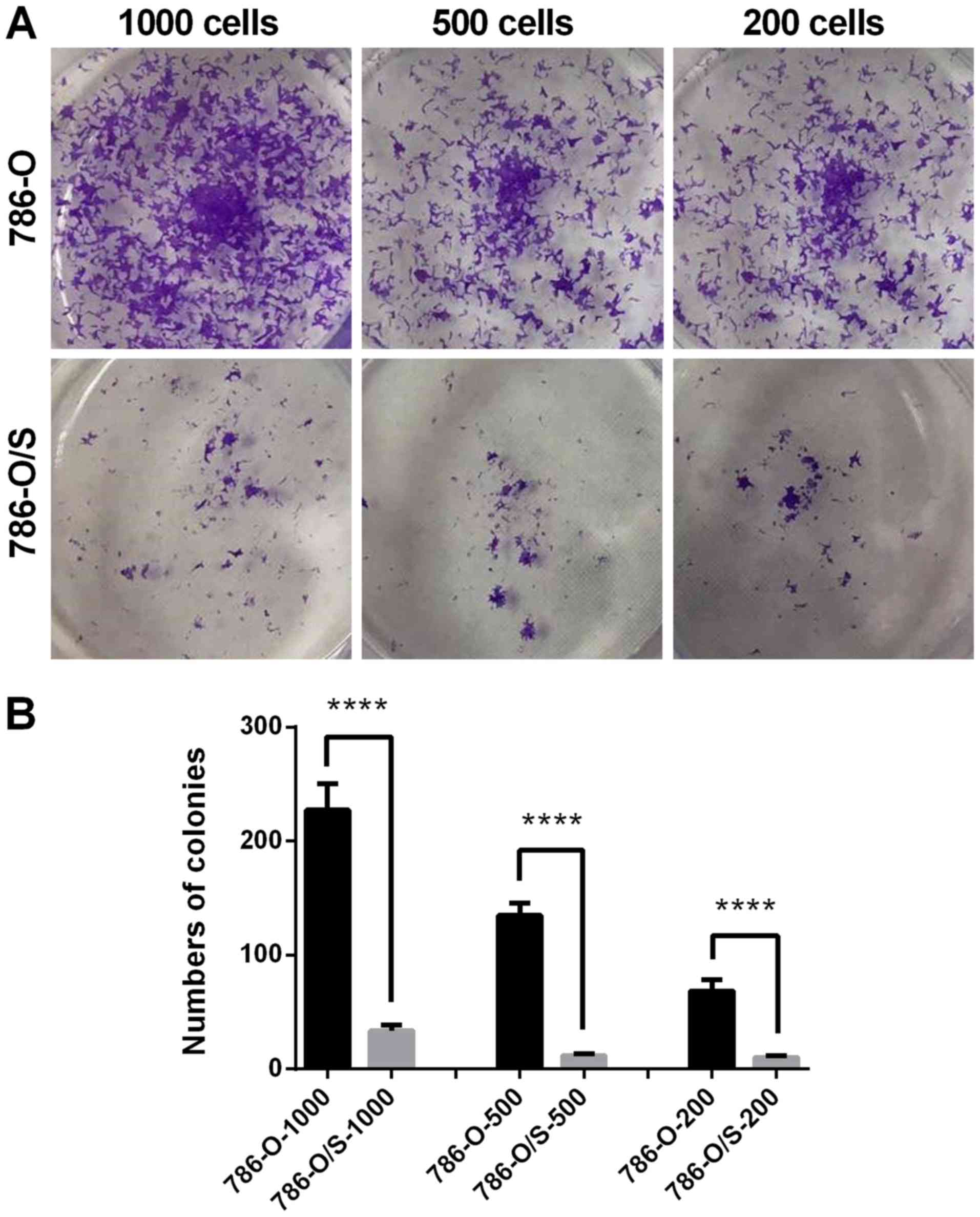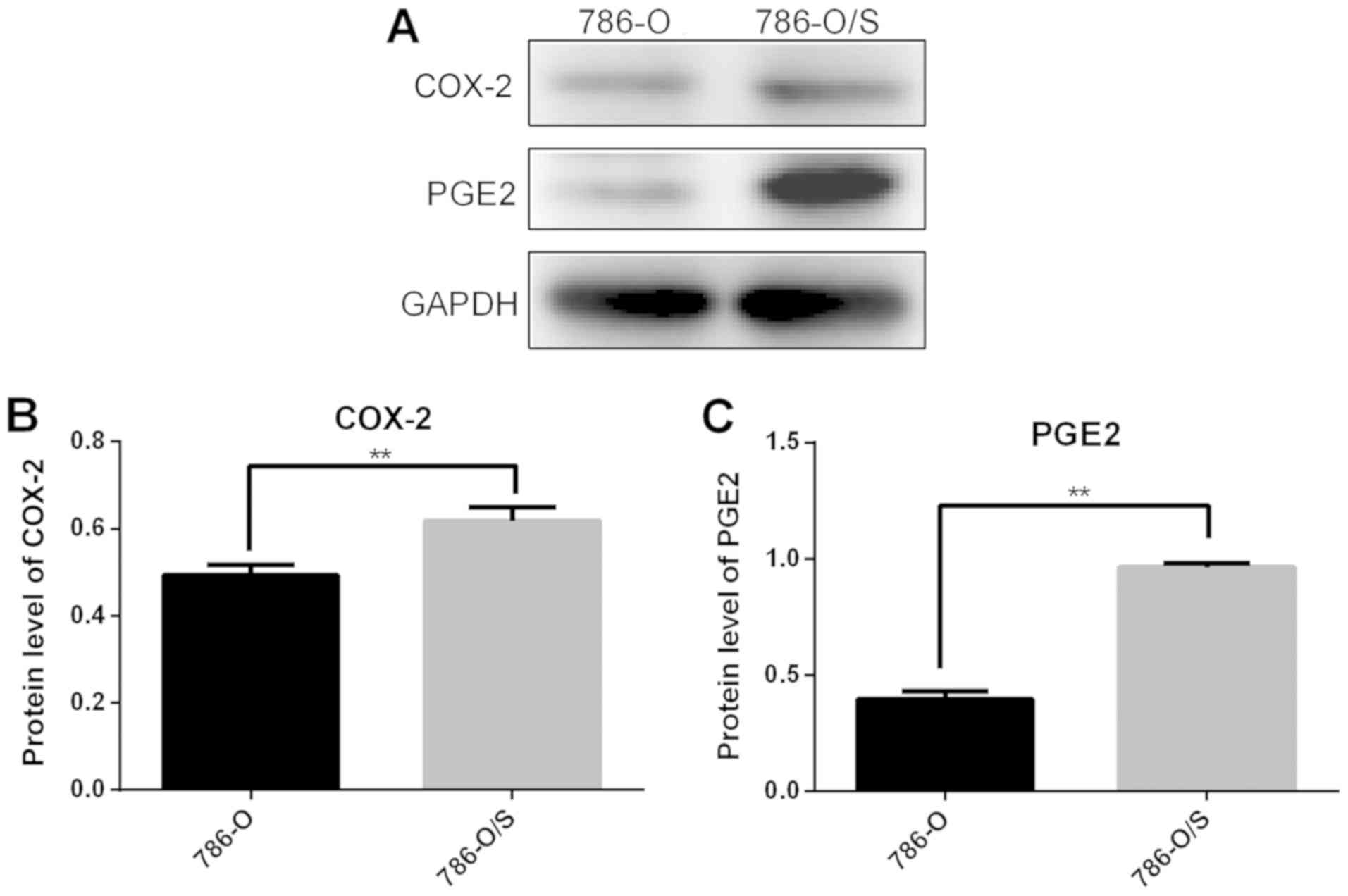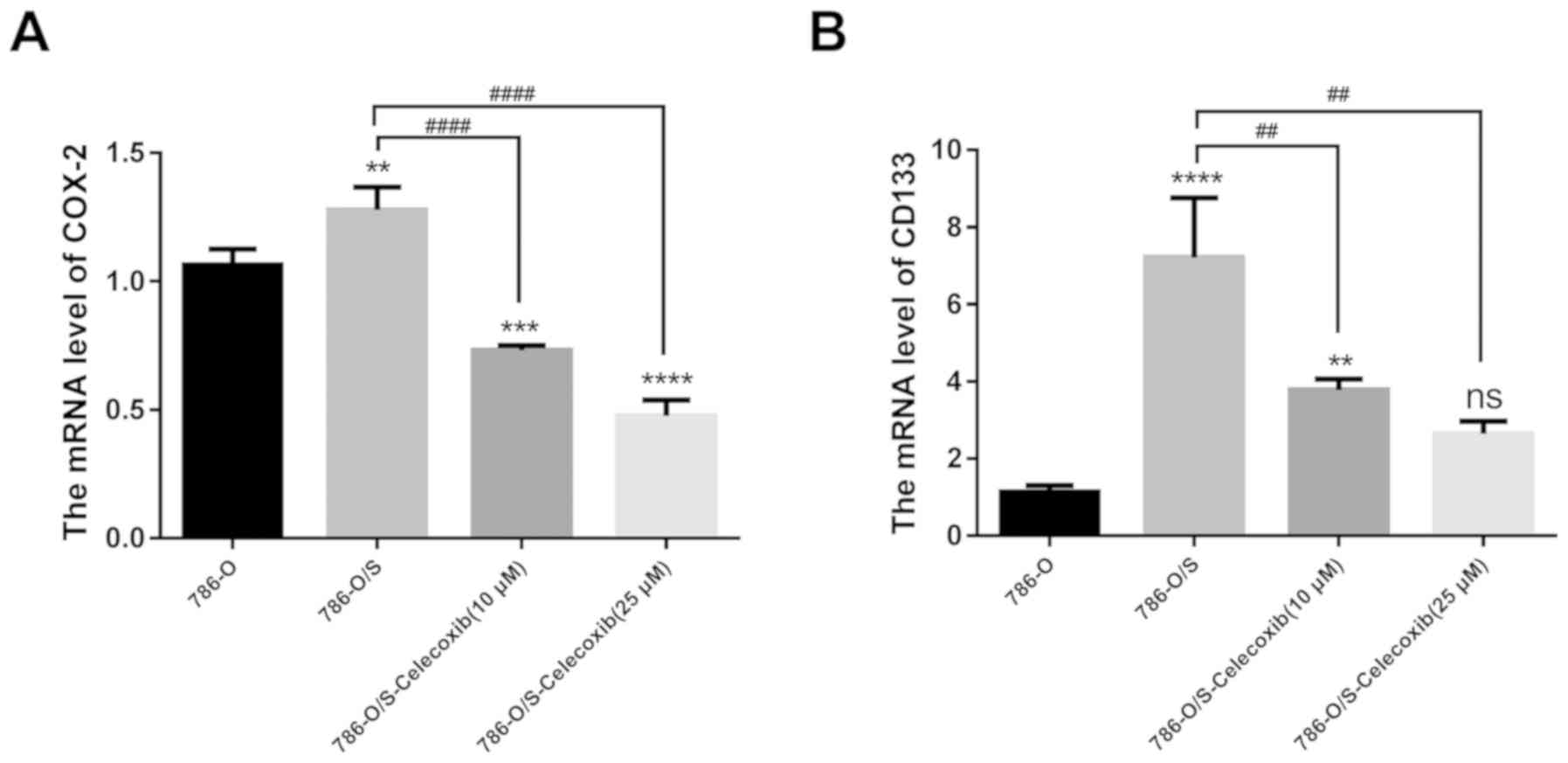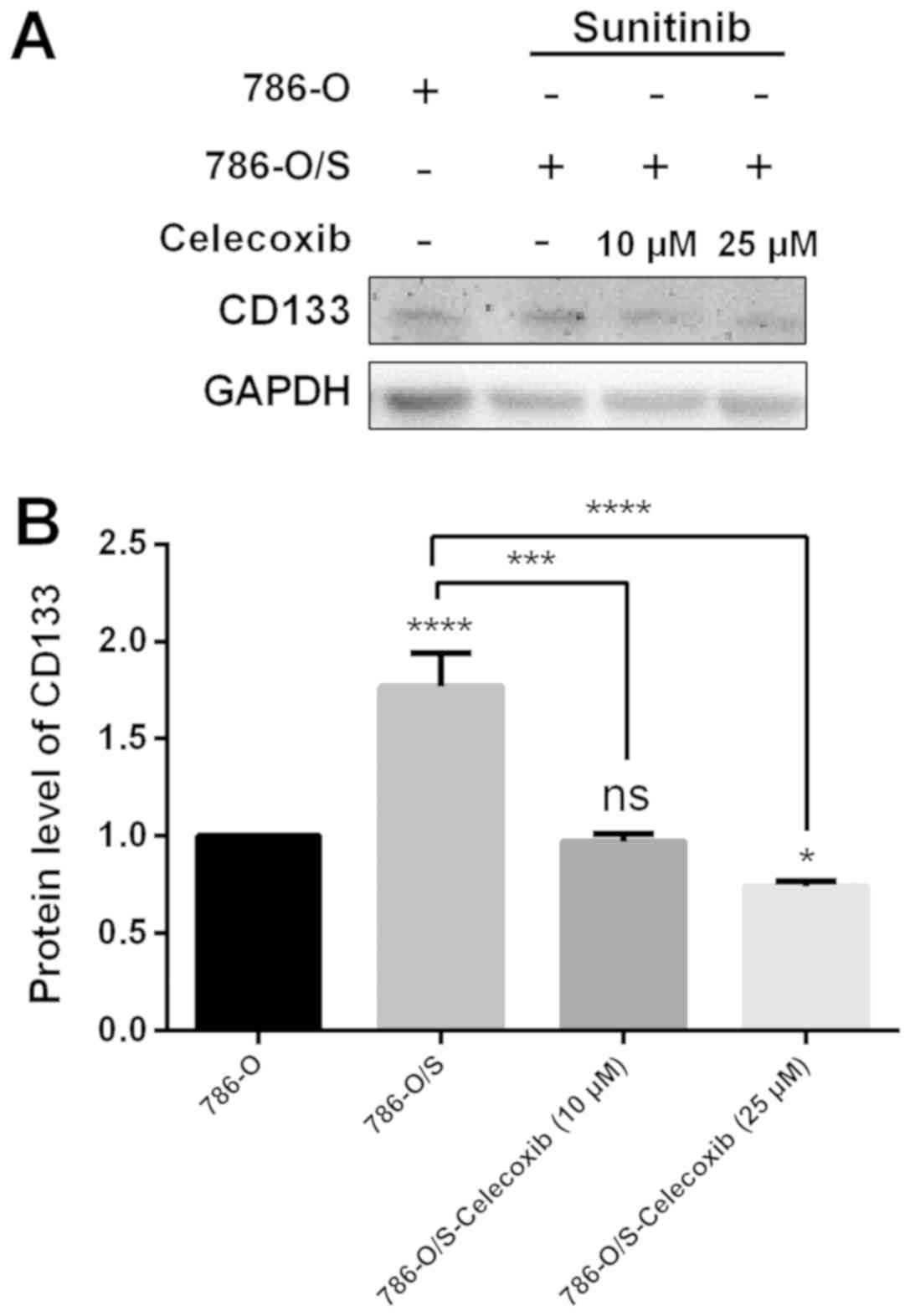|
1
|
Jemal A, Bray F, Center MM, Ferlay J, Ward
E and Forman D: Global cancer statistics. CA Cancer J Clin.
61:69–90. 2011. View Article : Google Scholar : PubMed/NCBI
|
|
2
|
Chin AI, Lam JS, Figlin RA and Belldegrun
AS: Surveillance strategies for renal cell carcinoma patients
following nephrectomy. Rev Urol. 8:1–7. 2006.PubMed/NCBI
|
|
3
|
National Cancer Institute: Previous
version: SEER Cancer Statistics Review, 1975–2010. NCI; Bethesda,
MD: 2013, https://seer.cancer.gov/archive/csr/1975_2010/
|
|
4
|
Zhu H, Wang Z, Xu Q, Zhang Y, Zhai Y, Bai
J, Liu M, Hui Z and Xu N: Inhibition of STAT1 sensitizes renal cell
carcinoma cells to radiotherapy and chemotherapy. Cancer Biol Ther.
13:401–417. 2012. View Article : Google Scholar : PubMed/NCBI
|
|
5
|
Pantuck AJ, Zisman A and Belldegrun AS:
The changing natural history of renal cell Carcinoma. J Urol.
166:1611–1623. 2001. View Article : Google Scholar : PubMed/NCBI
|
|
6
|
Gan HK, Seruga B and Knox JJ: Sunitinib in
solid tumors. Expert Opin Investig Drugs. 18:821–834. 2009.
View Article : Google Scholar : PubMed/NCBI
|
|
7
|
Abrams TJ, Lee LB, Murray LJ, Pryer NK and
Cherrington JM: SU11248 inhibits KIT and platelet-derived growth
factor receptor beta in preclinical models of human small cell lung
cancer. Mol Cancer Ther. 2:471–478. 2003.PubMed/NCBI
|
|
8
|
Mendel DB, Laird AD, Xin X, Louie SG,
Christensen JG, Li G, Schreck RE, Abrams TJ, Ngai TJ, Lee LB, et
al: In vivo antitumor activity of SU1 a novel tyrosine kinase
inhibitor targeting vascular endothelial growth factor and
platelet-derived growth factor receptors: Determination of a
pharmacokinetic/pharmacodynamic relationship. Clin Cancer Res.
9:327–337. 2003.PubMed/NCBI
|
|
9
|
Motzer R, Hutson TE, Tomczak P, Michaelson
MD, Bukowski RM, Rixe O, Oudard S, Negrier S, Szczylik C, Kim ST,
et al: Sunitinib versus interferon alfa in metastatic renal-cell
carcinoma. N Engl J Med. 356:115–124. 2007. View Article : Google Scholar : PubMed/NCBI
|
|
10
|
Tabriz HM, Mirzaalizadeh M, Gooran S, Niki
F and Jabri M: COX-2 Expression in renal cell carcinoma and
correlations with tumor grade, stage and patient prognosis. Asian
Pac J Cancer Prev. 17:535–538. 2016. View Article : Google Scholar : PubMed/NCBI
|
|
11
|
Zhao Q, Guo J, Wang G, Chu Y and Hu X:
Suppression of immune regulatory cells with combined therapy of
celecoxib and sunitinib in renal cell carcinoma. Oncotarget.
8:1668–1677. 2017.PubMed/NCBI
|
|
12
|
Kaminska K, Szczylik C, Lian F and
Czarnecka AM: The role of prostaglandin E2 in renal cell cancer
development: Future implications for prognosis and therapy. Future
Oncol. 10:2177–2187. 2014. View Article : Google Scholar : PubMed/NCBI
|
|
13
|
Liu LM, Sun HA, Li X, Chen Y, Wei BF and
Li XJ: Cluster of differentiation 44- and octamer-binding
transcription factor-4-positive stem-like osteosarcoma cells
involved in tumor development. Oncol Lett. 10:273–276. 2015.
View Article : Google Scholar : PubMed/NCBI
|
|
14
|
Li J, Zhong XY, Li ZY, Cai JF, Zou L, Li
JM, Yang T and Liu W: CD133 expression in osteosarcoma and
derivation of CD133+ cells. Mol Med Rep. 7:577–584. 2012.
View Article : Google Scholar : PubMed/NCBI
|
|
15
|
Ranji P, Salmani Kesejini T, Saeedikhoo S
and Alizadeh AM: Targeting cancer stem cell-specific markers and/or
associated signaling pathways for overcoming cancer drug
resistance. Tumor Biol. 37:13059–13075. 2016. View Article : Google Scholar
|
|
16
|
Livak KJ and Schmittgen TD: Analysis of
relative gene expression data using real-time quantitative PCR and
the 2(-Delta Delta C(T)) method. Methods. 25:402–408. 2001.
View Article : Google Scholar : PubMed/NCBI
|
|
17
|
Wiedmer T, Blank A, Pantasis S, Normand L,
Bill R, Krebs P, Tschan MP, Marinoni I and Perren A: Autophagy
inhibition improves sunitinib efficacy in pancreatic neuroendocrine
tumors via a lysosome-dependent mechanism. Mol Cancer Ther.
23:2502–2515. 2017. View Article : Google Scholar
|
|
18
|
Giuliano S and Pagès G: Mechanisms of
resistance to antiangiogenesis therapy. Biochimie. 95:1110–1119.
2013. View Article : Google Scholar : PubMed/NCBI
|
|
19
|
Gustafsson A, Fritz HKM and Dahlbäck B:
Gas6-Axl signaling in presence of Sunitinib is enhanced,
diversified and sustained in renal tumor cells, resulting in
tumor-progressive advantages. Exp Cell Res. 355:47–56. 2017.
View Article : Google Scholar : PubMed/NCBI
|
|
20
|
Lim SH, Hwang IG, Ji JH, Oh SY, Yi JH, Lim
DH, Lim HY, Lee SJ and Park SH: Intrinsic resistance to sunitinib
in patients with metastatic renal cell carcinoma. Asia Pac J Clin
Oncol. 13:61–67. 2016. View Article : Google Scholar : PubMed/NCBI
|
|
21
|
Sarkadi B, Homolya L, Szakács G and Váradi
A: Human multidrug resistance ABCB and ABCG transporters:
Participation in a chemoimmunity defense system. Physiol Rev.
86:1179–1236. 2006. View Article : Google Scholar : PubMed/NCBI
|
|
22
|
Gotink KJ, Broxterman HJ, Labots M, de
Haas RR, Dekker H, Honeywell RJ, Rudek MA, Beerepoot LV, Musters
RJ, Jansen G, et al: Lysosomal sequestration of Sunitinib: A novel
mechanism of drug resistance. Clin Cancer Res. 17:7337–7346. 2011.
View Article : Google Scholar : PubMed/NCBI
|
|
23
|
Bender C and Ullrich A: PRKX, TTBK2 and
RSK4 expression causes Sunitinib resistance in kidney carcinoma-
and melanoma-cell lines. Int J Cancer. 131:E45–E55. 2012.
View Article : Google Scholar : PubMed/NCBI
|
|
24
|
Zhou L, Liu XD, Sun M, Zhang X, German P,
Bai S, Ding Z, Tannir N, Wood CG, Matin SF, et al: Targeting MET
and AXL overcomes resistance to sunitinib therapy in renal cell
carcinoma. Oncogene. 35:2687–2697. 2016. View Article : Google Scholar : PubMed/NCBI
|
|
25
|
Shibasaki N, Yamasaki T, Kanno T, Arakaki
R, Sakamoto H, Utsunomiya N, Inoue T, Tsuruyama T, Nakamura E,
Ogawa O and Kamba T: Role of IL13RA2 in sunitinib resistance in
clear cell renal cell carcinoma. PLoS One. 10:e01309802015.
View Article : Google Scholar : PubMed/NCBI
|
|
26
|
Hamburger AW and Salmon SE: Primary
bioassay of human tumor stem cells. Science. 197:461–463. 1997.
View Article : Google Scholar
|
|
27
|
Bonnet D and Dick JE: Human acute myeloid
leukemia is organized as a hierarchy that originates form a
primitive hematopoietic cell. Nat Med. 3:730–737. 1997. View Article : Google Scholar : PubMed/NCBI
|
|
28
|
Al-Hajj M, Wicha MS, Benito-Hernandez A,
Morrison SJ and Clarke MF: Prospective identification of
tumorigenic breast cancer cells. Proc Natl Acad Sci USA.
100:3983–3988. 2003. View Article : Google Scholar : PubMed/NCBI
|
|
29
|
Gedye C, Sirskyj D, Lobo NC, Meens J,
Hyatt E, Robinette M, Fleshner N, Hamilton RJ, Kulkarni G, Zlotta
A, et al: Cancer stem cells are underestimated by standard
experimental methods in clear cell renal cell carcinoma. Sci Rep.
6:252202016. View Article : Google Scholar : PubMed/NCBI
|
|
30
|
Yuan ZX, Mo J, Zhao G, Shu G, Fu HL and
Zhao W: Targeting strategies for renal cell carcinoma: From renal
cancer cells to renal cancer stem cells. Front Pharmacol.
10:4232016.
|
|
31
|
Kozakowski N, Soleiman A and Pammer J: BM
I-1 expression is inversely correlated with the grading ofrenal
cell carcinoma. Pathol Oncol Res. 14:9–13. 2008. View Article : Google Scholar : PubMed/NCBI
|
|
32
|
Kim K, Ihm H, Ro JY and Cho YM: High-level
expression of stem cell marker CD133 in clear cell renal cell
carcinoma with favorable prognosis. Oncol Lett. 2:1095–1100.
2011.PubMed/NCBI
|
|
33
|
Bussolati B, Bruno S, Grange C,
Buttiglieri S, Deregibus MC, Cantino D and Camussi G: Isolation of
renal progenitor cells from adult human kidney. Am J Pathol.
166:545–555. 2005. View Article : Google Scholar : PubMed/NCBI
|
|
34
|
Sun C, Song H, Zhang H, Hou C, Zhai T,
Huang L and Zhang L: CD133 expression in renal cell carcinoma (RCC)
is correlated with nuclear hypoxia-inducing factor 1α (HIF-1α). J
Cancer Res Clin Oncol. 138:1619–1624. 2012. View Article : Google Scholar : PubMed/NCBI
|
|
35
|
Costa WH, Rocha RM, Cunha IW, Fonseca FP,
Guimaraes GC and Zequi Sde C: CD133 immunohistochemical expression
predicts progression and cancer-related death in renal cell
carcinoma. World J Urol. 30:553–558. 2012. View Article : Google Scholar : PubMed/NCBI
|
|
36
|
Fan X, Matsui W, Khaki L, Stearns D, Chun
J, Li YM and Eberhart CG: Notch pathway inhibition depletes
stem-like cells and blocks engraftment in embryonal brain tumors.
Cancer Res. 66:7445–7452. 2006. View Article : Google Scholar : PubMed/NCBI
|
|
37
|
Wang J, Wang H, Li Z, Wu Q, Lathia JD,
McLendon RE, Hjelmeland AB and Rich JN: c-Myc is required for
maintenance of glioma cancer stem cells. PLoS One. 3:e37692008.
View Article : Google Scholar : PubMed/NCBI
|
|
38
|
Taketo MM: Cyclooxygenase-2 inhibitors in
tumorigenesis (part I). J Natl Cancer Inst. 90:1529–1536. 1998.
View Article : Google Scholar : PubMed/NCBI
|
|
39
|
Tsujii M, Kawano S and DuBois RN:
Cyclooxygenase-2 expression in human colon cancer cells increase
metastatic potential. Proc Nad Acad Sci USA. 94:3336–3340. 1997.
View Article : Google Scholar
|
|
40
|
Zha S, Yegnasubramanian V, Nelson WG,
Isaacs WB and De Marzo AM: Cyclooxygenases in cancer: Progress and
perspective. Cancer Lett. 215:1–20. 2004. View Article : Google Scholar : PubMed/NCBI
|
|
41
|
Yi S, Wang CP and Zeng FQ: Expression
levels of COX-2 and MMP-14 in renal cell carcinoma and clinical
significance. Modern Hospital. 17:77–80. 2017.
|
|
42
|
Wang X, Zhang L, O'Neill A, Bahamon B,
Alsop DC, Mier JW, Goldberg SN, Signoretti S, Atkins MB, Wood CG
and Bhatt RS: Cox-2 inhibition enhances the activity of sunitinib
in human renal cell carcinoma xenografts. Br J Cancer. 108:319–326.
2013. View Article : Google Scholar : PubMed/NCBI
|
|
43
|
Zhao Q, Hu XY, Wang GM, Guo JM and Chu YW:
COX-2 inhibitor enhances the activity of sunitinib in renal cell
carcinoma-bearing mice and its mechanism. Fudan Univ J Med Sci.
43:527–533. 2016.
|
|
44
|
Rini BI, Weinberg V, Dunlap S, Elchinoff
A, Yu N, Bok R, Simko J and Small EJ: Maximal COX-2 immumostaining
and clinical response to celecoxib and interferon alpha therapy in
metastatic renal cell carcinoma. Cancer. 106:566–575. 2006.
View Article : Google Scholar : PubMed/NCBI
|
|
45
|
Sharma V, Dixit D, Ghosh S and Sen E:
Cox-2 regulates the proliferation of glioma stem like cells.
Neurochem Int. 59:567–571. 2011. View Article : Google Scholar : PubMed/NCBI
|
|
46
|
Annabi B, Laflamme C, Sina A, Lachambre MP
and Béliveau R: A MT1-MMP/NF-kappaB signaling axis as a checkpoint
controller of COX-2 expression in CD133(+) U87 glioblastoma cells.
J Neuroinflammation. 6:82009. View Article : Google Scholar : PubMed/NCBI
|
|
47
|
Ma HI, Chiou SH, Hueng DY, Tai LK, Huang
PI, Kao CL, Chen YW and Sytwu HK: Celecoxib and radioresistant
glioblastoma-derived CD133+ cells: Improvement in radiotherapeutic
effects. J Neurosurg. 114:651–662. 2011. View Article : Google Scholar : PubMed/NCBI
|
|
48
|
Deng Y, Su Q, Mo J, Fu X, Zhang Y and Lin
EH: Celecoxib downregulates CD133 expression through inhibition of
the Wnt signaling pathway in colon cancer cells. Cancer Invest.
31:97–102. 2013. View Article : Google Scholar : PubMed/NCBI
|















